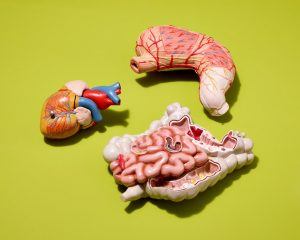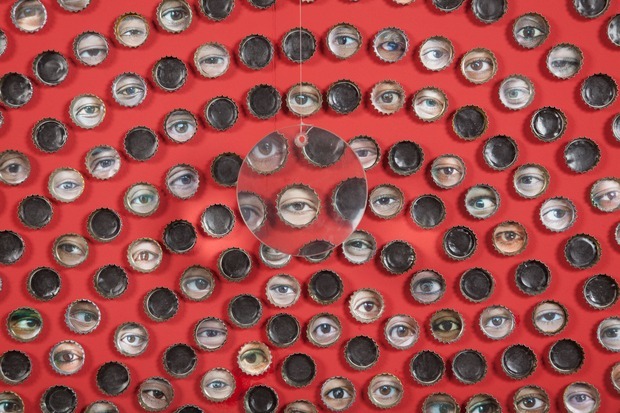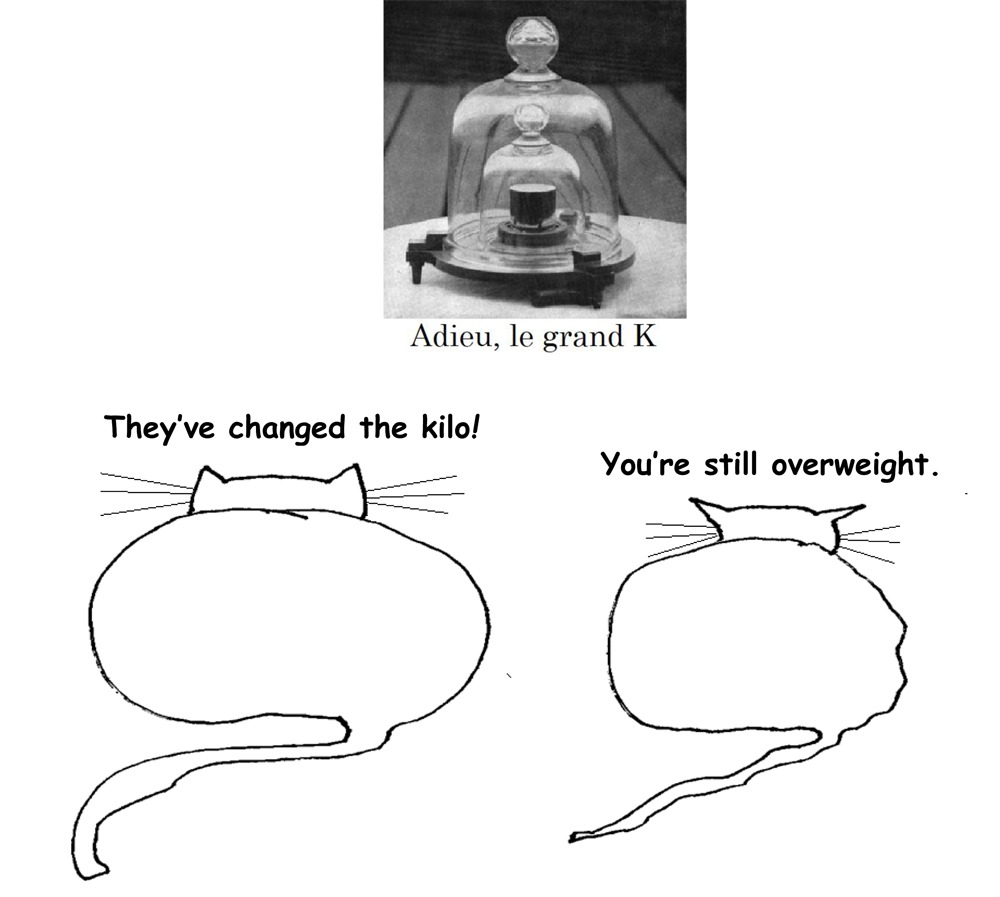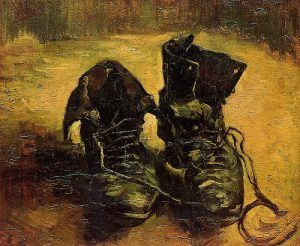Kevin Hartnett in Quanta:
 Elliptic curves seem to admit infinite variety, but they really only come in two flavors. That is the upshot of a new proof from a graduate student at Harvard University.
Elliptic curves seem to admit infinite variety, but they really only come in two flavors. That is the upshot of a new proof from a graduate student at Harvard University.
Elliptic curves may sound exotic, but they’re unspectacular geometric objects, as ordinary as lines, parabolas or ellipses. In a paper first posted online last year, Alexander Smith proved a four-decade-old conjecture that concerns a fundamental trait of elliptic curves called “rank.” Smith proved that, within a specific family of curves, and with one qualification, half of all curves have rank 0 and half have rank 1.
The result establishes baseline characteristics of objects that have intrigued mathematicians for centuries, and that have increased in importance in recent decades.
“We’ve been thinking about this for over 1,000 years, and now we have some probabilistic sense about [elliptic curves]. That’s super important,” said Shou-Wu Zhang, a mathematician at Princeton University who advised Smith at the outset of the work, when Smith was an undergraduate at Princeton.
More here.

 New York’s governor, Andrew Cuomo, just announced a bail-reform program. Details were not yet available at press time, but it’s clear that Cuomo intends to release thousands of arrested persons, even suspected felons, without bail.
New York’s governor, Andrew Cuomo, just announced a bail-reform program. Details were not yet available at press time, but it’s clear that Cuomo intends to release thousands of arrested persons, even suspected felons, without bail. Hannah Arendt reflected on the significance of humanity’s desire for the stars in her 1963 essay “
Hannah Arendt reflected on the significance of humanity’s desire for the stars in her 1963 essay “ It occurred to me, when thinking about Ronnie’s bathroom scene, that this is not McQueen’s first time depicting the repressed, deep-seated trauma of a wealthy but unhappy individual on film: that Shame, whose central character appeared to have developed sex-addiction in the wake of some unspecified, formative trauma—maybe psychic, maybe physical—addressed a similar, if not entirely symmetrical, ache. The sex addict, Brandon, as played in the key of Patrick Bateman by the Irish actor Michael Fassbender, also contained his introspection and his self-injurious anger within the confines of the bathroom. Often, his releases there were masturbatory. So, on some level, was the movie; lacking detailed and elucidating background information, Brandon’s tragedy became the tragedy of a successful, very handsome white man tortured by the need to regularly have sex with one or more women who resemble fashion models. (Brandon’s kookily sad sister, Sissy, is so white that she is played by Carey Mulligan, and is called Sissy. His apartment, in what might be seen as a reflection of his inner turmoil, is white and expensive, but lit so that above all else, it looks blue.)
It occurred to me, when thinking about Ronnie’s bathroom scene, that this is not McQueen’s first time depicting the repressed, deep-seated trauma of a wealthy but unhappy individual on film: that Shame, whose central character appeared to have developed sex-addiction in the wake of some unspecified, formative trauma—maybe psychic, maybe physical—addressed a similar, if not entirely symmetrical, ache. The sex addict, Brandon, as played in the key of Patrick Bateman by the Irish actor Michael Fassbender, also contained his introspection and his self-injurious anger within the confines of the bathroom. Often, his releases there were masturbatory. So, on some level, was the movie; lacking detailed and elucidating background information, Brandon’s tragedy became the tragedy of a successful, very handsome white man tortured by the need to regularly have sex with one or more women who resemble fashion models. (Brandon’s kookily sad sister, Sissy, is so white that she is played by Carey Mulligan, and is called Sissy. His apartment, in what might be seen as a reflection of his inner turmoil, is white and expensive, but lit so that above all else, it looks blue.)
 If we were to stop and ask ourselves how our lives might be improved, one likely answer that might occur to us is that we should spend less time at work. At least that is what the statistics suggest.
If we were to stop and ask ourselves how our lives might be improved, one likely answer that might occur to us is that we should spend less time at work. At least that is what the statistics suggest. Cancer has an insidious talent for evading the natural defenses that should destroy it. What if we could find ways to help the immune system fight back? It has begun to happen. The growing field of immunotherapy is profoundly changing cancer treatment and has rescued many people with advanced malignancies that not long ago would have been a death sentence. “Patients with advanced cancer are increasingly living for years not months,” a
Cancer has an insidious talent for evading the natural defenses that should destroy it. What if we could find ways to help the immune system fight back? It has begun to happen. The growing field of immunotherapy is profoundly changing cancer treatment and has rescued many people with advanced malignancies that not long ago would have been a death sentence. “Patients with advanced cancer are increasingly living for years not months,” a 
 “Beware of literature!” This warning occurs in Jean-Paul Sartre’s 1938 novel Nausea as an entry in the diary of the narrator, Antoine Roquentin. In context, it concerns the way that literary narratives falsify our experience of events by investing them with an organization and structure that our experiences in themselves, as we live them, do not have. When Bilbo Baggins finds the ring in The Hobbit, Tolkein tells us that although Bilbo didn’t realize it at the time, this would turn out to be a turning point in his life. When married couples recall their first meeting, their account inevitably packages the event as a “beginning,” even though they may have had no inkling of this at the time.
“Beware of literature!” This warning occurs in Jean-Paul Sartre’s 1938 novel Nausea as an entry in the diary of the narrator, Antoine Roquentin. In context, it concerns the way that literary narratives falsify our experience of events by investing them with an organization and structure that our experiences in themselves, as we live them, do not have. When Bilbo Baggins finds the ring in The Hobbit, Tolkein tells us that although Bilbo didn’t realize it at the time, this would turn out to be a turning point in his life. When married couples recall their first meeting, their account inevitably packages the event as a “beginning,” even though they may have had no inkling of this at the time. Do you find this prospect upsetting? Perhaps you think it is unfair for someone to get a job without a good reason for why they deserve it rather than anyone else. Perhaps you think such a system would decrease your chances of getting the job you want. If so then you may be under the influence of the cult of excellence.
Do you find this prospect upsetting? Perhaps you think it is unfair for someone to get a job without a good reason for why they deserve it rather than anyone else. Perhaps you think such a system would decrease your chances of getting the job you want. If so then you may be under the influence of the cult of excellence.


 In the 70s our church caught bus fever as an effort to bring in the sheaves with greater volume (we pass the salvation savings on to you!). We began deploying a fleet of ancient school buses, painted Baptist blue, out into the neighborhoods of town to bring anyone that so wished to church. Heathen parents gleefully signed up their kids so they could read the paper and drink coffee in peace. Today such an effort would be like inviting people to sue you and then providing a free ride to the courthouse. Come for the mass transit; stay for the litigation.
In the 70s our church caught bus fever as an effort to bring in the sheaves with greater volume (we pass the salvation savings on to you!). We began deploying a fleet of ancient school buses, painted Baptist blue, out into the neighborhoods of town to bring anyone that so wished to church. Heathen parents gleefully signed up their kids so they could read the paper and drink coffee in peace. Today such an effort would be like inviting people to sue you and then providing a free ride to the courthouse. Come for the mass transit; stay for the litigation.
 When the father of your child is in jail, pray even if you don’t believe in God. Pray even though in your head of heads you know it won’t do shit. Stop staring at the walls, at the clock, at the phone. At your baby, now eight, sleeping next to you, his sneakers, caked with mud, still tied to his feet. Pray because it will distract you from what’s coming, from a conversation millions of mothers have already had with their sons. You are not different, not an exception to some rule. Start praying instead of feeling sorry for yourself. Buck the fuck up because he will need you.
When the father of your child is in jail, pray even if you don’t believe in God. Pray even though in your head of heads you know it won’t do shit. Stop staring at the walls, at the clock, at the phone. At your baby, now eight, sleeping next to you, his sneakers, caked with mud, still tied to his feet. Pray because it will distract you from what’s coming, from a conversation millions of mothers have already had with their sons. You are not different, not an exception to some rule. Start praying instead of feeling sorry for yourself. Buck the fuck up because he will need you. Despite the continued influence of formalism in the 20th Century there were currents of dissent that took an opposing position. Thinkers as diverse as Heidegger, Whitehead and Deleuze were arguing that genuine aesthetic appreciation is not about form but the unraveling of form. Despite their considerable differences, each was arguing that the most important kinds of aesthetic experiences are those in which the dominant foreground and design elements of a work are haunted by a background of contrasting effects that provide depth. It’s the conflict between foreground and background, surface and depth, between what is known and what is mysterious that give art its allure. The uncanny is the key to art worthy of the name. For example, for Heidegger in his famous study of Van Gogh’s A Pair of Shoes, it’s the seemingly insignificant brushstrokes in the background of the painting that allow amorphous figures to emerge and begin to take to shape as we view it. The background figures preserve ambiguity and allow the concealing and unconcealing of multiple interpretations to take place, which Heidegger argues, are at the heart of a work of art.
Despite the continued influence of formalism in the 20th Century there were currents of dissent that took an opposing position. Thinkers as diverse as Heidegger, Whitehead and Deleuze were arguing that genuine aesthetic appreciation is not about form but the unraveling of form. Despite their considerable differences, each was arguing that the most important kinds of aesthetic experiences are those in which the dominant foreground and design elements of a work are haunted by a background of contrasting effects that provide depth. It’s the conflict between foreground and background, surface and depth, between what is known and what is mysterious that give art its allure. The uncanny is the key to art worthy of the name. For example, for Heidegger in his famous study of Van Gogh’s A Pair of Shoes, it’s the seemingly insignificant brushstrokes in the background of the painting that allow amorphous figures to emerge and begin to take to shape as we view it. The background figures preserve ambiguity and allow the concealing and unconcealing of multiple interpretations to take place, which Heidegger argues, are at the heart of a work of art.